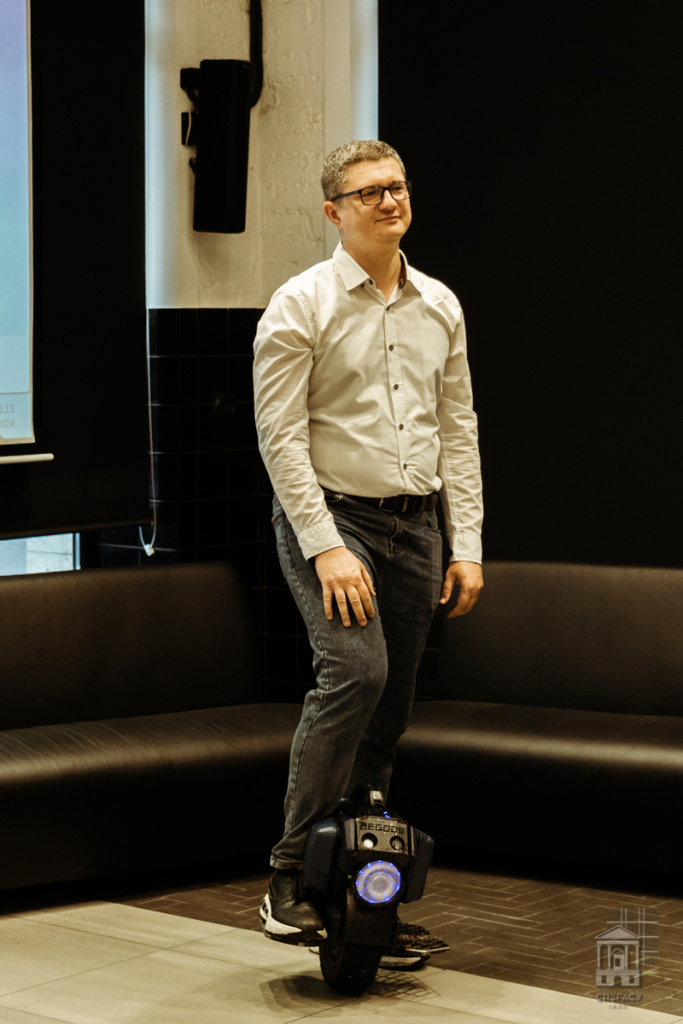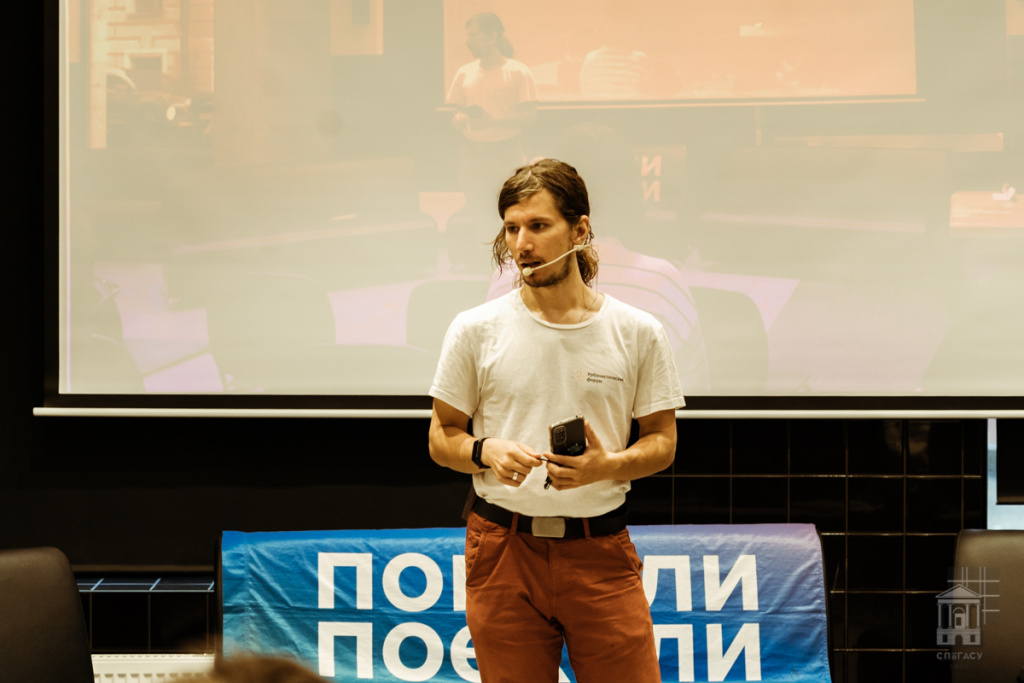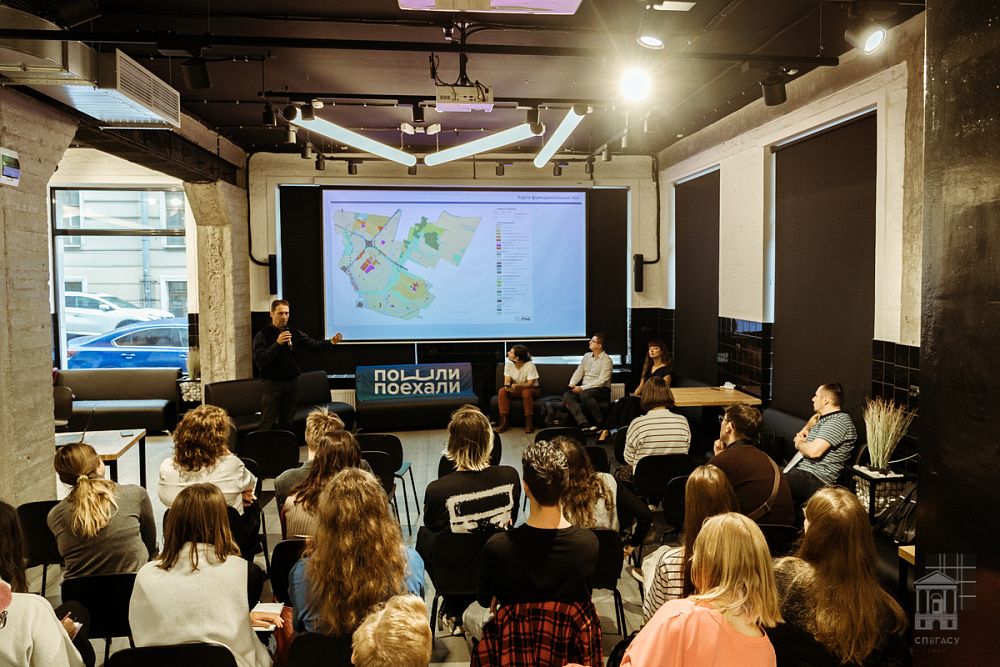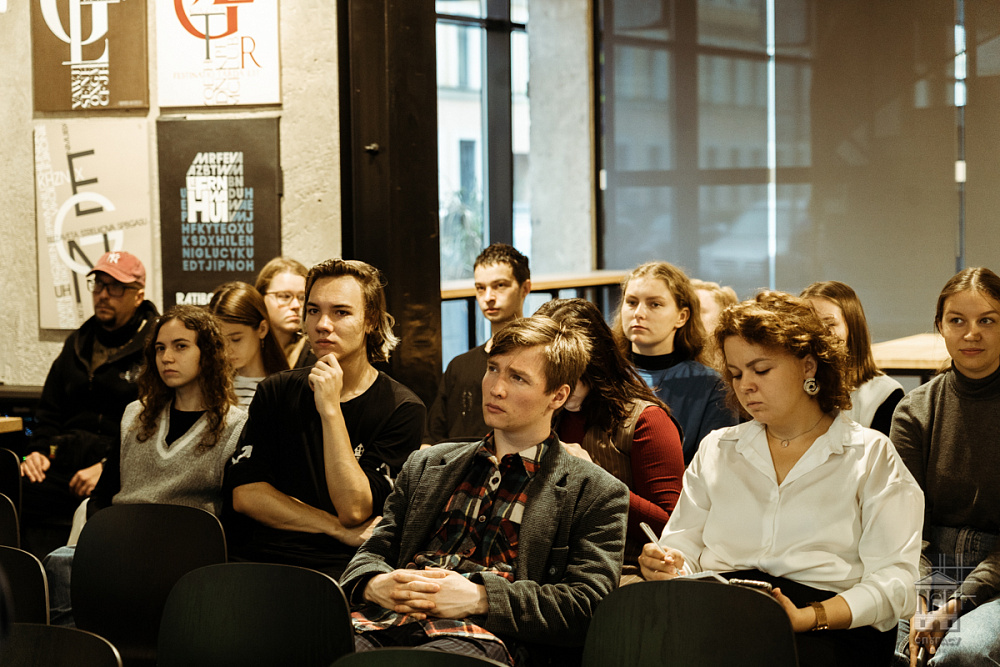 Workshop participants draw up a plan for a bicycle transport network
Workshop participants draw up a plan for a bicycle transport network
On 27 September, as part of the XVI International Conference "Organization and Safety of Road Traffic in Large Cities", the SPbGASU hosted a section "Development of individual mobility and bicycle infrastructure in cities" organized by the "Let's Go" Association. Participants discussed a pressing issue: how to make travel on roads safer and more comfortable. Experts shared their ideas and opinions on this issue. In addition, as part of the section, OTS Lab company held a workshop dedicated to planning a bicycle transport network.
Cycling infrastructure in the suburbs will raise safety and mobility in individual housing construction areas to a new level
 Konstantin Koshkin
Konstantin Koshkin
Konstantin Koshkin, a PhD student at the Belgorod State Technical University named after V. G. Shukhov and the author of the channel "KoshkinGorod", spoke about his research. It is devoted to how the development of bicycle transport infrastructure in areas of individual housing construction will contribute to the integrated development of urban agglomerations.
Cycling infrastructure is often associated with the urban environment, but we should not forget about the space outside the city. In the suburbs, various travel scenarios can also be implemented. Currently, in cases of insufficient comprehensive development structure, suburban residents are forced to regularly travel to the city by private transport, which leads to increased traffic.
Konstantin Koshkin noted that the use of bicycles and personal mobility devices (PMD) can help reduce traffic jams. The study showed that some of the trips of suburban residents can be switched from a personal car to a bicycle or other PMD.
When forming the development structure of the individual housing construction area and its street and road network, it is necessary to take into account not only the need to increase the level of mobility of residents and road safety, but also the need to involve new users of bicycle transport and PMD. This will create an effective system of movement and improve the transport situation both in the city and beyond.
The influence of the information field on urban infrastructure
Ilya Abrosimov, CEO of the Research Center for Urban Technologies and Urban Studies (Kaliningrad), head of the Velogorod.online project and author of the Popular Mobility channel, spoke about bicycle micro-communities and the creation of an information background for the development of bicycle and PMD infrastructure. According to Ilya, negative news headlines such as "Kaliningrad to Close Klenovaya Alley because of Cyclists" cause discontent among those who do not use bicycles, forming a negative attitude towards cyclists and their initiatives. This leads to less support for the development of bicycle infrastructure.
The lack of necessary infrastructure leads to conflicts between pedestrians, motorists and cyclists, which in turn generates more negative news. A vicious circle is formed: lack of infrastructure – more conflicts – more negative news – higher reputational risk – fewer changes – lack of new infrastructure. Ilya encouraged listeners to create their own micro-communities and maintain a positive atmosphere in them, sharing examples from domestic and foreign experience.
Problems of using personal mobility devices and possible solutions
Dmitry Smeshko, chairman of the St Petersburg branch of the Interregional Public Organization "KoleSIM", administrator of the "MonoPiter" community, shared stories about personal mobility devices in a big city.
Dmitry, who came to the section on a unicycle, actively uses this personal mobility device. According to him, people choose PMD for various reasons: to always arrive to work on time, to achieve what was previously unachievable (when delivering orders), to be on time everywhere (for shopping, to a cafe, to training) and not depend on traffic jams, saving time for the main thing - communication with loved ones.
However, there is a problem: people using PMD find it difficult to move around the city, since there is not cycling infrastructure everywhere, and according to traffic rules, they have to ride on sidewalks, facing the lack of a barrier-free environment. Dmitry showed using the metro map as an example that the bike paths intended for PMD are interrupted in some parts of the city. He believes that if the city's cycling network is made more coherent, this will allow PMD to become a full-fledged city transport.
Study of mobility on the bridges of Vasilievsky Island: results and conclusions
 Konstantin Mazein
Konstantin Mazein Chairman of the "Let's Go" Council Konstantin Mazein spoke about the volunteer study of mobility on the bridges of Vasilievsky Island, which has been conducted annually since 2013 by various people and organizations. This year, the study was also included in the selection of the scientific volunteering website Dobro.rf.
Experts analyzed the flow of cyclists and users of personal mobility devices (PMD) crossing the Bolshaya and Malaya Neva. It turned out that the most intense traffic is observed in the evening. In addition, the restriction of the work of kick-sharing services in the central zone (prohibition of parking) led to the fact that people more often choose a bicycle.
Voice alerts will improve safety in the city
 Maria Fomina
Maria Fomina Maria Fomina, curator of the Smart City direction of the Competence Center of the Leningrad Region (2020–2024), project manager of Videofor LLC, presented video analytics and notification solutions for the safety and comfort of cycling infrastructure.
Maria reported that there are about 20 million surveillance cameras installed in Russia, but 90% of all recorded material is not used in any way. She proposed a solution: the camera films, the neural network detects the violation, and the loudspeaker warns the violator.
How does it work? Maria showed a video where two teenagers decided to swim in an unauthorized place. The boys knew that there was a camera in this place and swimming was prohibited. But they went into the water anyway. At the moment when one of the boys had already entered the reservoir, a stern voice warned them about breaking the rules.
The system works as follows: data from cameras and external sensors and systems is analyzed; video analytics detectors determine signs of an incident; automatic scenarios launch appropriate notifications (including voice notifications); a notification is received for prompt response to the incident. All this happens in a matter of seconds in automatic mode.
Planning a cycle network: results from an OTS Lab workshop
The final event of the section was a workshop on planning a bicycle transport network. The participants of the section, which included university students and representatives of various industries, were divided into four teams to develop their options for planning bicycle transport infrastructure in four cities of the Leningrad Region: Gatchina, Sosnovy Bor, Kingisepp and Tikhvin. The participants of the workshop, together with the curators from OTS Lab, identified key points of attraction and residential areas, analyzed their location, and then began planning routes, choosing infrastructure solutions, implementation stages and assessing the cost of proposals. After completing work on the projects, the teams presented their developments and discussed each other's results.
OTS Lab proposed to send projects to city administrations with the aim of sharing the results and solutions for developing cycling infrastructure. The knowledge gained will undoubtedly be useful to the participants both in the learning process and in their professional activities.





